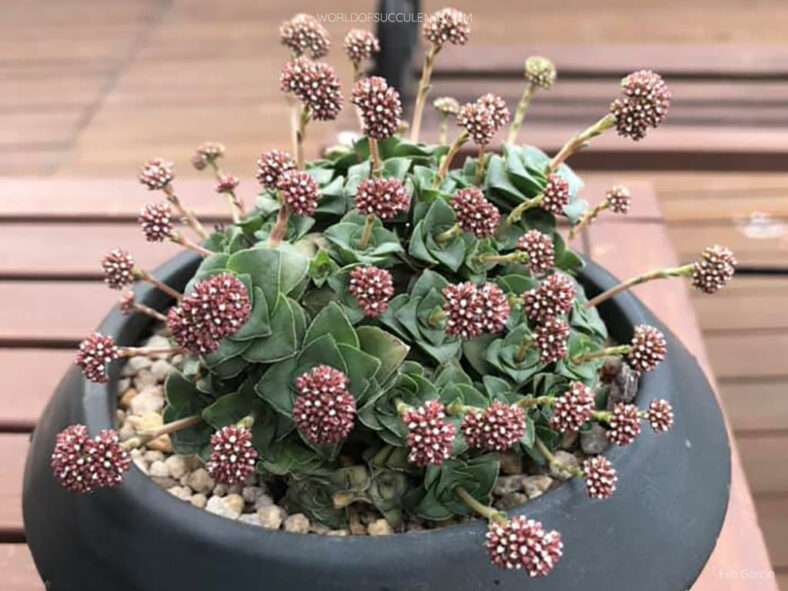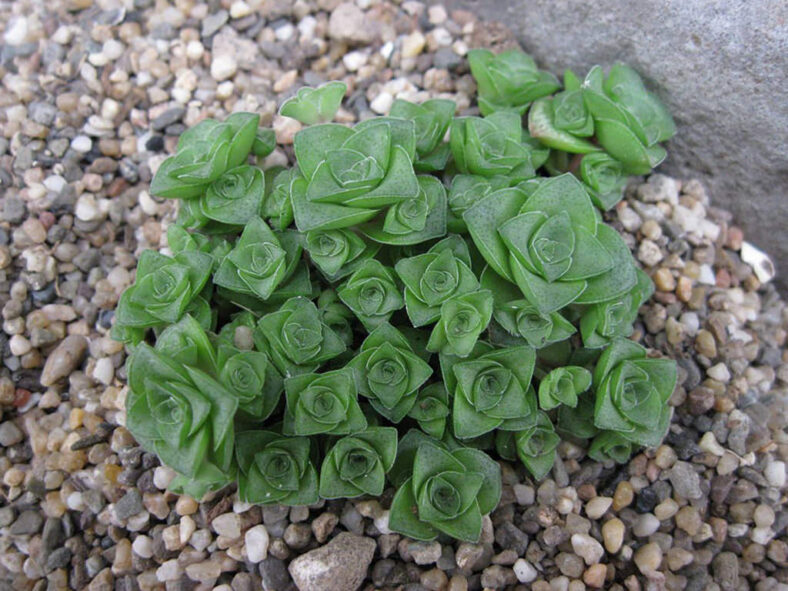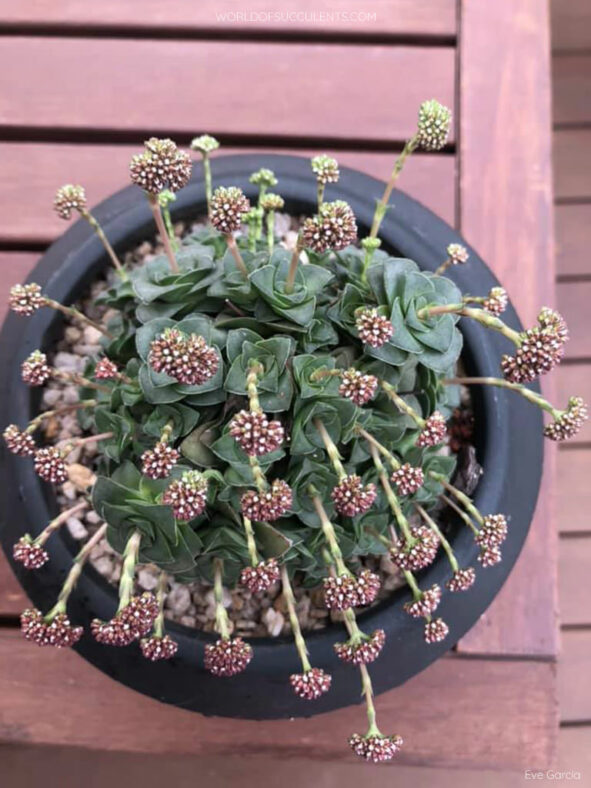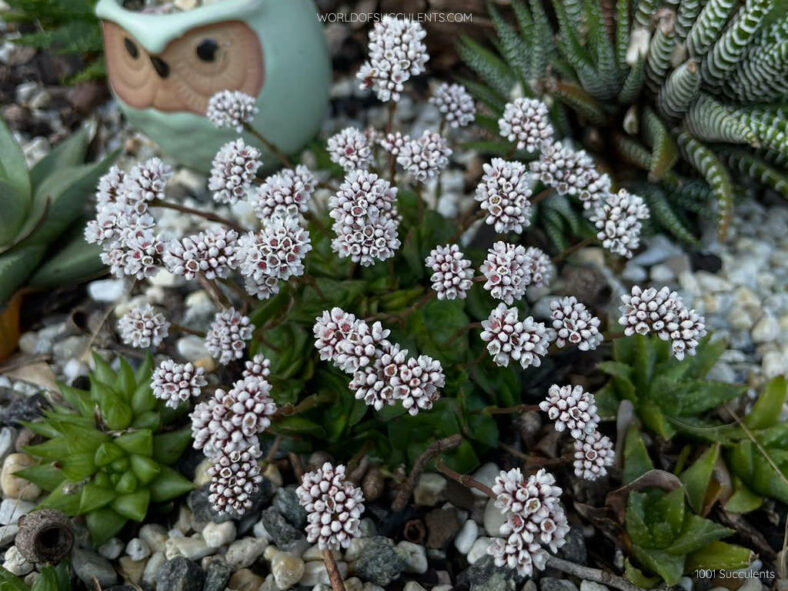Crassula socialis is a charming, small plant that is ideal for growing in pots and also makes a great addition to rock gardens. It closely resembles Crassula montana subsp. quadrangularis, often leading to confusion between the two.
Scientific Name
Crassula socialis Schönland
Common Name(s)
Kommadagga Crassula, Ring Plant
Scientific Classification
Family: Crassulaceae
Subfamily: Crassuloideae
Genus: Crassula
Etymology
The specific epithet "socialis" (pronounced "so-KEE-ah-liss") means "of or pertaining to allies or confederates; allied, confederate" and refers to the habit of the species to grow in cushions of many rosettes.
Origin
Crassula socialis is native to South Africa. It is known from only a few localities in the Eastern Cape province, near King William's Town and Kommadagga, where it grows in rock crevices on cliffs that are usually south- or southeast-facing.
Description
Crassula socialis is a small succulent that forms dense clusters of rosettes with green, 4-ranked leaves, often tinged red towards the margins. It proliferates from the base and can reach a height of 2.4 inches (6 cm) when flowering. The rosettes can grow up to 0.8 inches (2 cm) in diameter. The leaves are flat, ovate to elliptical, and taper to a point at the tip. They are closely appressed and can measure up to 0.45 inches (1.4 cm) in length and 0.25 inches (0.6 cm) in width. The leaves are slightly fleshy and smooth, with a dense row of cilia along the margins. The old leaves remain attached to the stems.
During late winter and spring, Crassula socialis produces small flowers with a white, tubular corolla, basally fused petals, and yellow anthers. The inflorescences are terminal, more or less rounded thyrses with 1 to 3 dichasia and a distinct, slender peduncle that can grow up to 2.4 inches (6 cm) long.

How to Grow and Care for Crassula socialis
Light: Crassula socialis prefers full sun to partial shade. However, avoid intense afternoon sun during the hot summer days, as it can burn the leaves. If you're growing the plant indoors, place it in a window that receives at least 6 hours of direct sunlight.
Soil: This plant is not particular about soil pH, but it does require soil that is very porous and has excellent drainage. You can use commercial soil mix for succulents or create your own.
Temperature: While Crassula socialis can tolerate average summer temperatures and short-term freezing, extreme cold or heat can cause it to lose leaves and even die. It grows best in USDA Plant Hardiness Zones 10a to 11b, with average minimum winter temperatures ranging from 30°F to 50°F (- 1.1°C to 10°C).
Watering: To avoid overwatering, use the "soak and dry" method to keep your plant healthy. Water deeply, and then let the soil completely dry out before watering again. Reduce watering in winter. The potted plants require more frequent watering than those grown in the ground.
Fertilizing: While Crassula socialis does not require high levels of nutrients, it benefits from a small amount of organic fertilizer in mid-spring, when it starts actively growing.
Repotting: Repot the plant as needed, preferably in spring, at the beginning of the growing season. Ensure the soil is dry before beginning the repotting process.
Propagation: This plant can be propagated using either leaves or stem cuttings. The easiest method is to use leaves, but stem cuttings will result in larger plants more quickly. Additionally, the plant can be grown from seeds. The best time to propagate by cuttings is at the beginning of the growing season, while the ideal time to sow the seeds is during spring and summer.
Learn more at How to Grow and Care for Crassula.
Toxicity of Crassula socialis
Crassula socialis is considered non-toxic and is safe for growing around children and pets.
Links
- Back to genus Crassula
- Succupedia: Browse succulents by Scientific Name, Common Name, Genus, Family, USDA Hardiness Zone, Origin, or cacti by Genus
Photo Gallery
Click on a photo to see a larger version.


